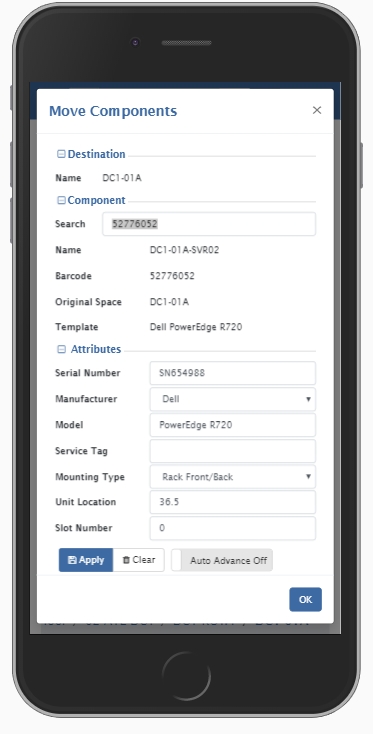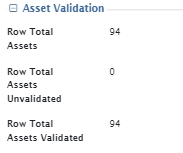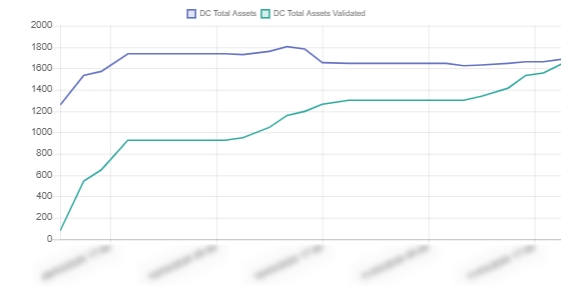In this blog post, Brad Beamish, Director of Consulting Services for Cormant, reviews why auditing is an essential part of a successful DCIM deployment.
The Equipment Validation Challenge
Cormant routinely manages DCIM deployments for customers where Cormant DCIM replaces an existing tool set for managing IT infrastructure. In many cases, the current system (often spreadsheets and sometimes home-grown DB’s and other DCIM solutions) contains a partial record set of questionable accuracy. Cormant works with customers to extract all usable data from the existing records. However, there will always be questions about the overall completeness and accuracy of the data. When merging multiple data sources, floorplans and rack views, there are likely to be conflicts between the data sources and questions that only a physical visit to the rack can answer. This physical validation process takes effort but Cormant has refined unique online and offline mobility features over the past 17 years ensuring the validation can be completed quickly and accurately.
Asset Validation
Asset Validation should be an essential part of migrating data from customer data sources into a DCIM solution. Existing records are usually partially accurate and provide a great starting place for DCIM deployments. However, the ultimate trust in the accuracy of the DCIM records can only be fully realized by physically validating every asset. The validation assures not only accurate asset data, but capacity data and, where required, power and data connectivity data.
Cormant Mobility Makes Validation Work
To audit the physical infrastructure, where possible Cormant leverages barcoded assets (most equipment has a barcode) with Cormant’s unique online and offline mobility. Cormant-CS supports the use of smartphones, tablets, and all-in-one Windows® and Android® barcode enabled mobile computers

Mobility gives the validation team complete freedom to physically stand in front of each rack and lookup or scan the barcode of each asset. Once an asset is found, the user is presented with the existing data set for the asset. Any physically observable data can be updated, things like RU location and Mounting Type. Barcoded data can be easily scanned in if missing, like Serial Numbers or Asset tags. Newly found assets can be added using the same process.
Once the user updates and accepts the on-screen data, the asset’s Validation Date attribute is stamped with today’s date. The screen is cleared, and the next asset is scanned, this is repeated until all assets have been scanned and validated. Key to this process is a one-touch per asset approach and once the data is verified or updated, it is available in the Cormant DCIM system with a record of who made the changes and when.
Once all racks are visited, the assets that still have no Validation Date stamped can be considered to be Missing Assets and moved to a holding space.
Cormant usually finds many new assets as part of this work, immediately improving the project’s ROI. The found rate varies, but is often in the 20 – 35% range, usually quite a surprise for the data center operator.
Validation Counters

To allow for easy tracking of the validation efforts, Asset Validation counters are configured at the Rack, Row and Site levels of the infrastructure and record;
- Total Assets
- Total Assets Unvalidated
- Total Assets Validated
Rack totals are aggregated to the Row and then the Data Center to give an overall picture of the total assets and the total number of Validated/Unvalidated assets within the site.
Reporting
Validation count attributes are stored historically so that Project Managers and customers can track the progress of the validation process. Historical reports detailing the Total Assets vs. the Total Assets Validated can offer insight to validation progress and the accuracy of the imported records set, clearly illustrating the number of assets that were missing and need to be added as part of the validation process.
In the example below, we started with 1,200 known assets and zero validated, but completed with a little over 1,600 assets, an approximate accuracy of initial data of 66%.

Conclusion
It is important to realize that a point in time audit is useless if the data are not kept up-to-date. Using a combination of Cormant workflow and the same mobility used in the audit, an ongoing change management process that captures future changes as they occur is simple to implement.

The crucial element provided by Cormant-CS is real-time access to all of the data, all of the time, for both read, update, and create. If a change is made, it is recorded at the same time. This provides a closed-loop change process and means users trust the Cormant-CS DCIM, which means it gets used. We look forward to discussing how we can help you migrate to Cormant-CS. Click here to be contacted.